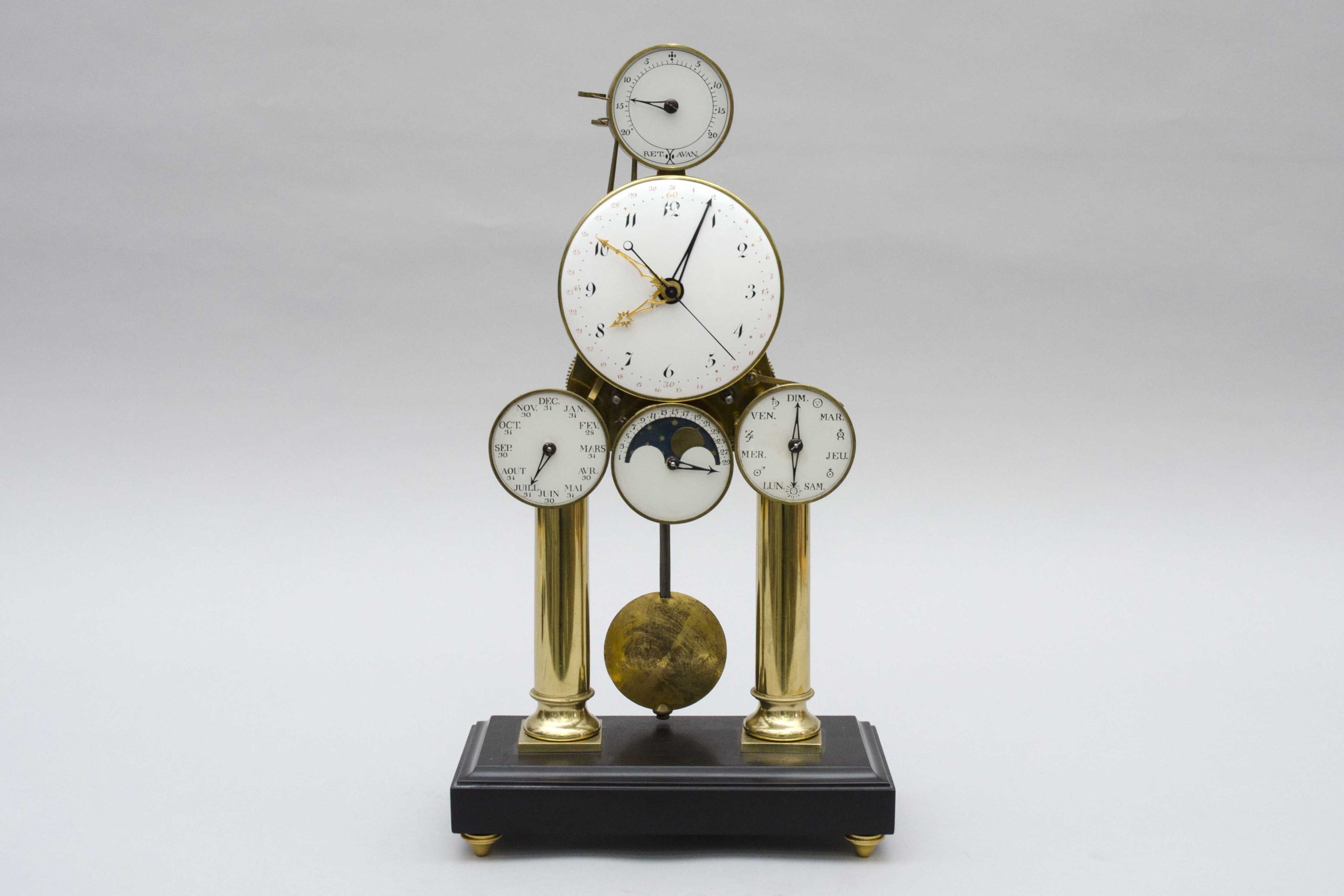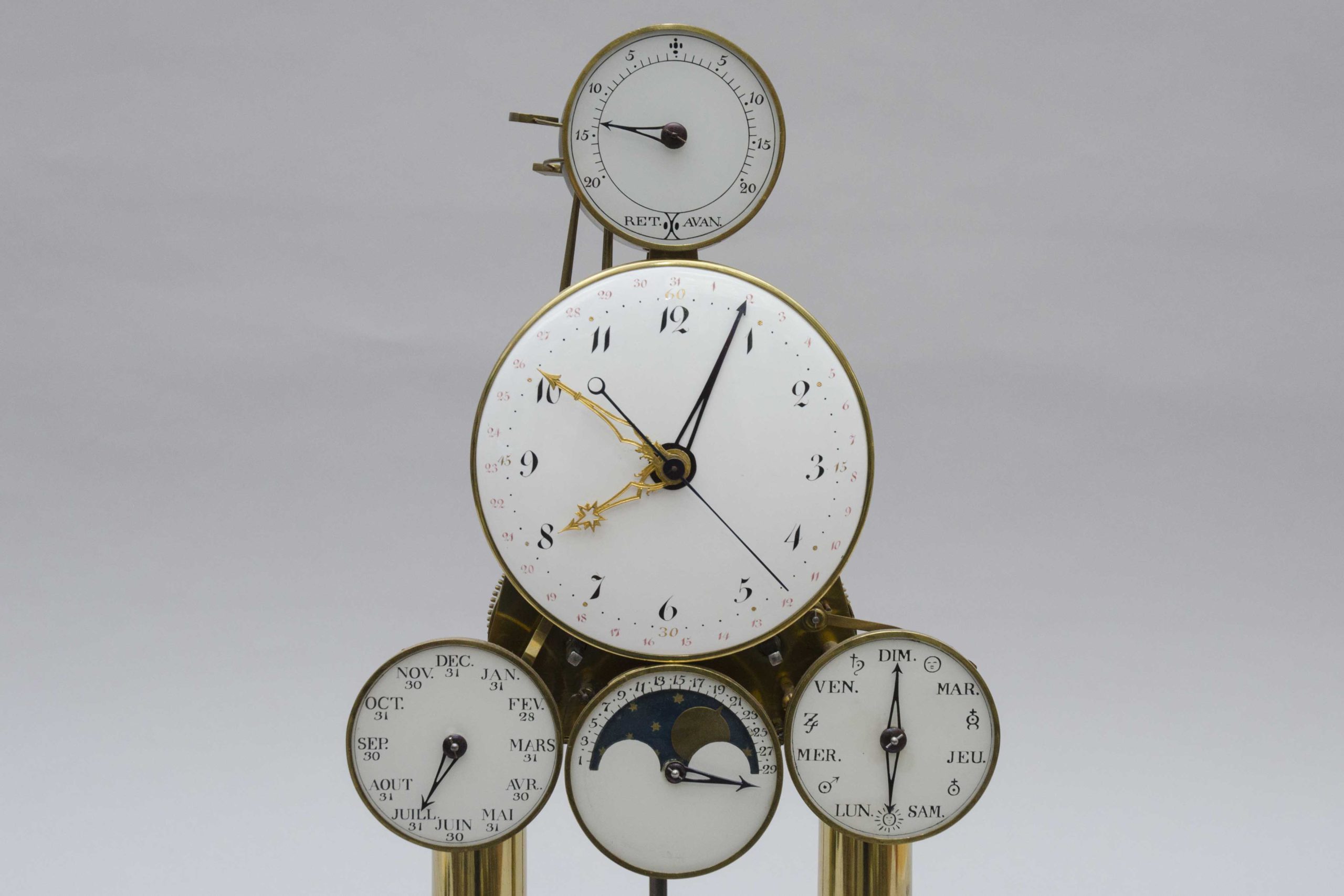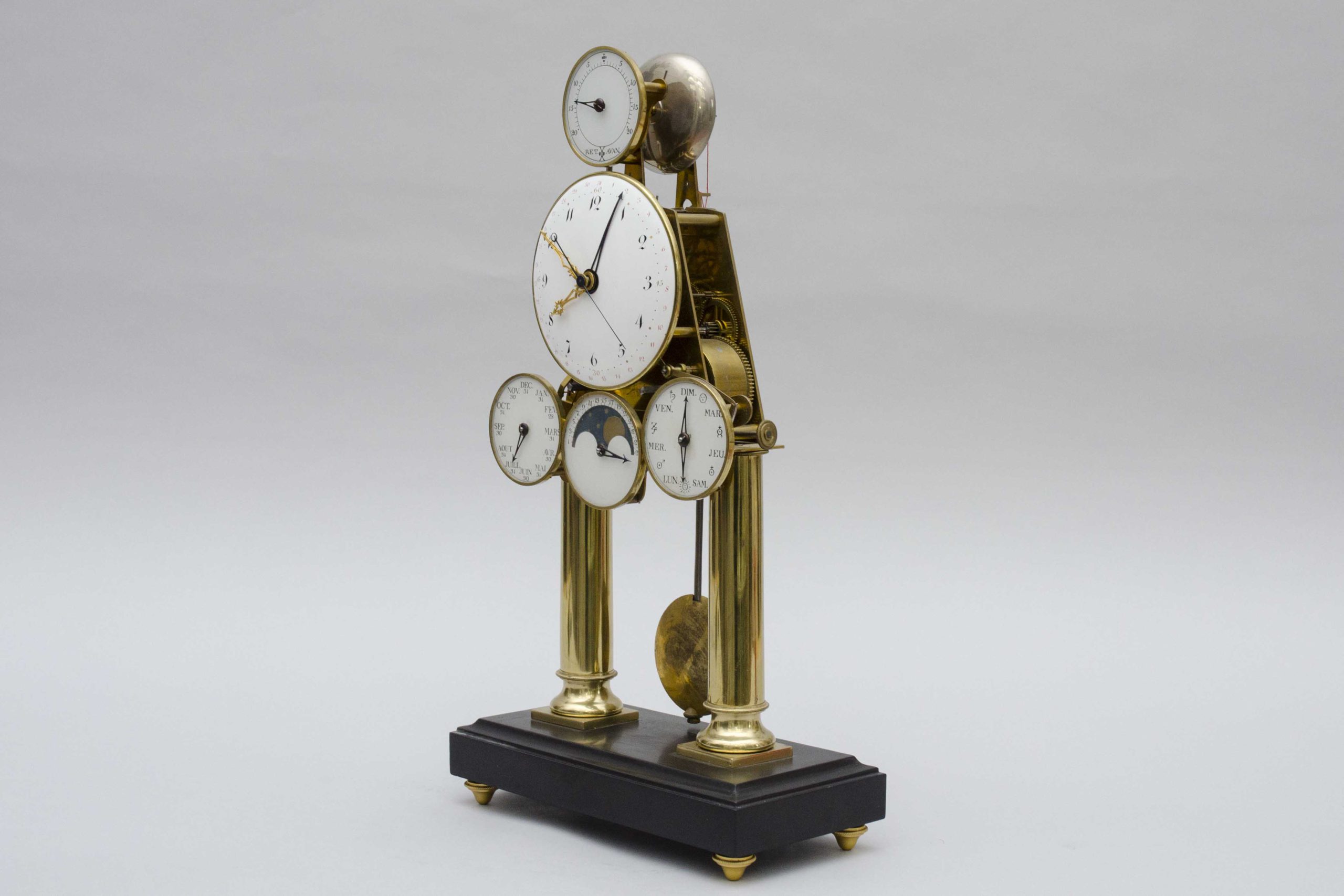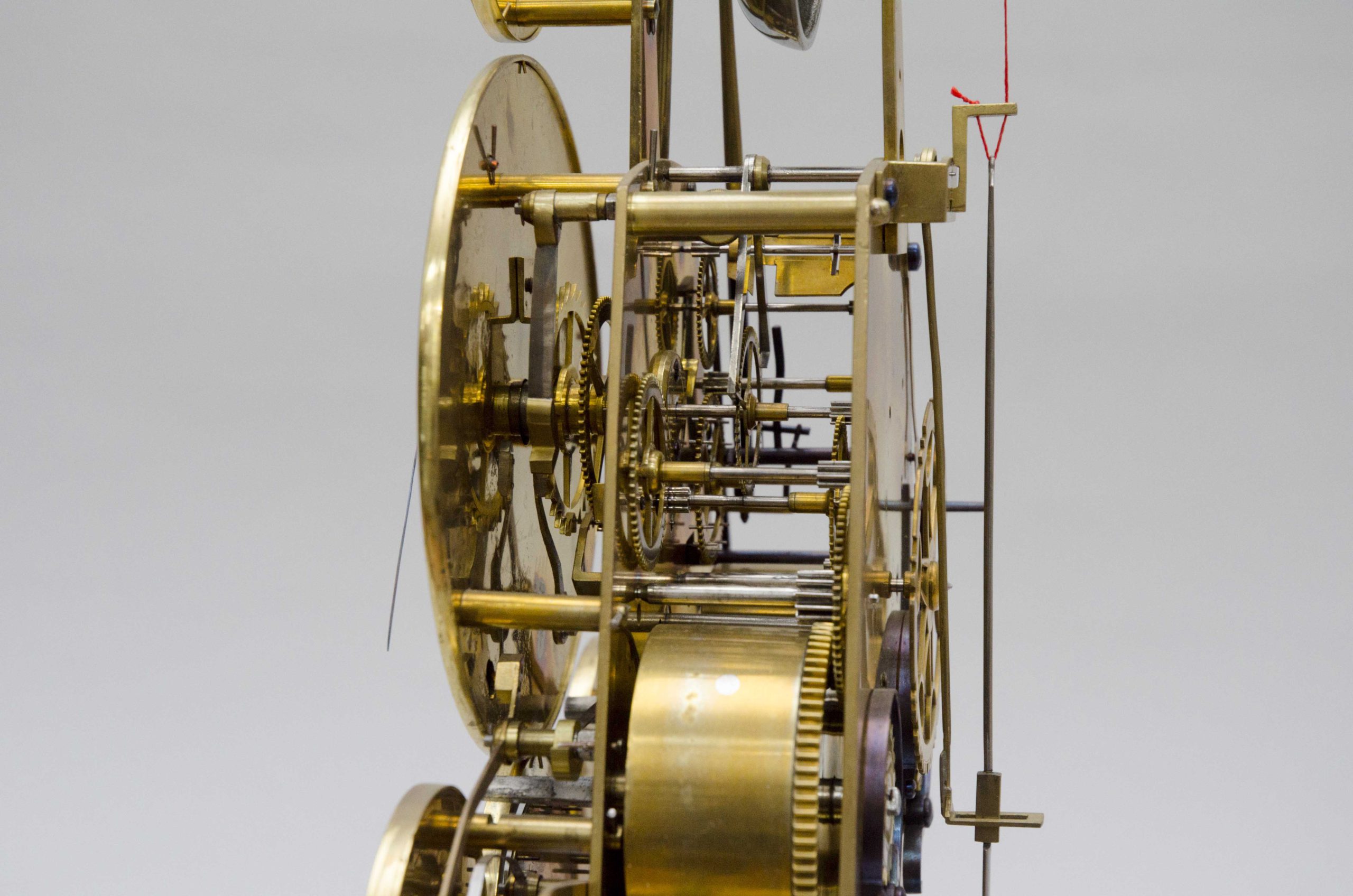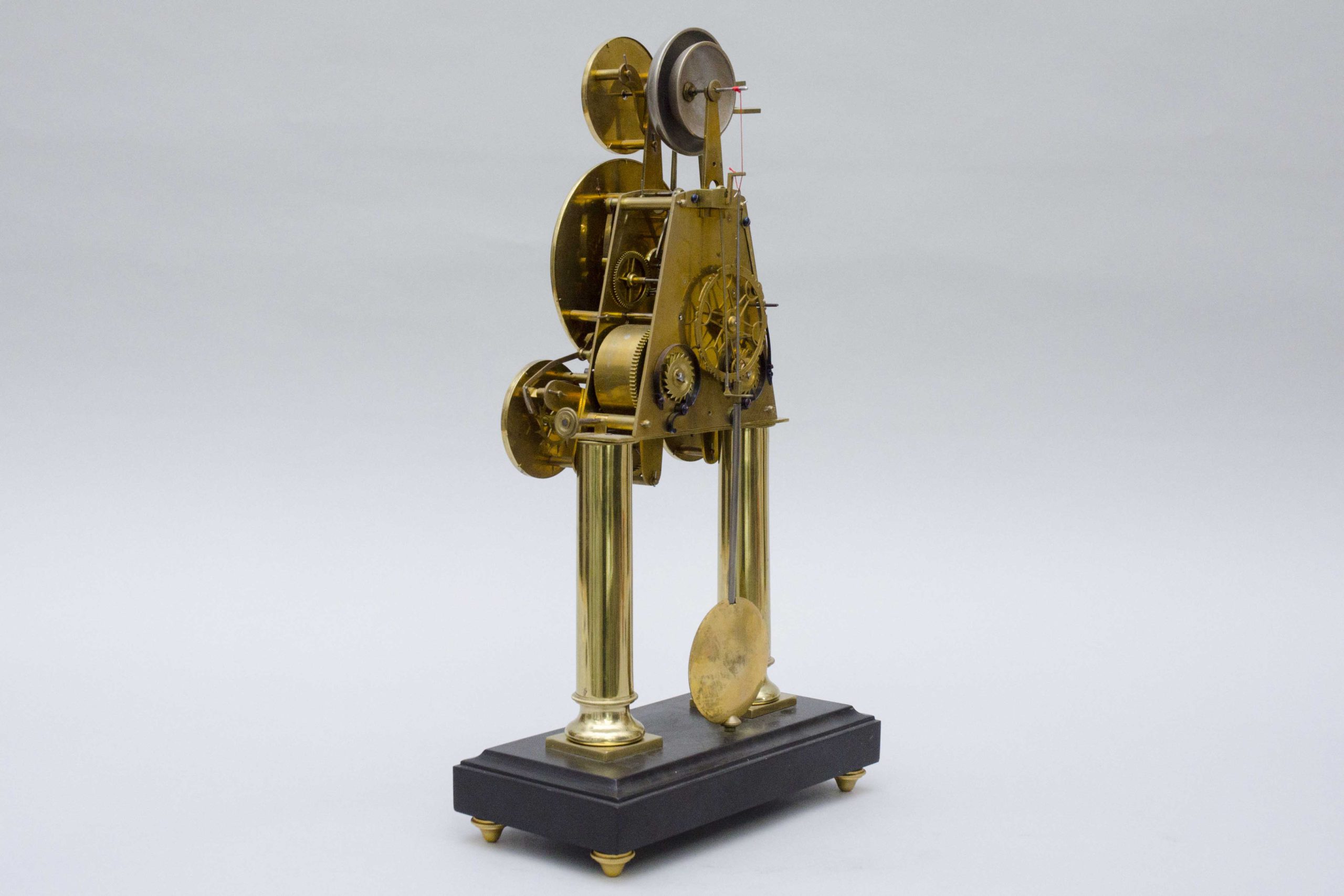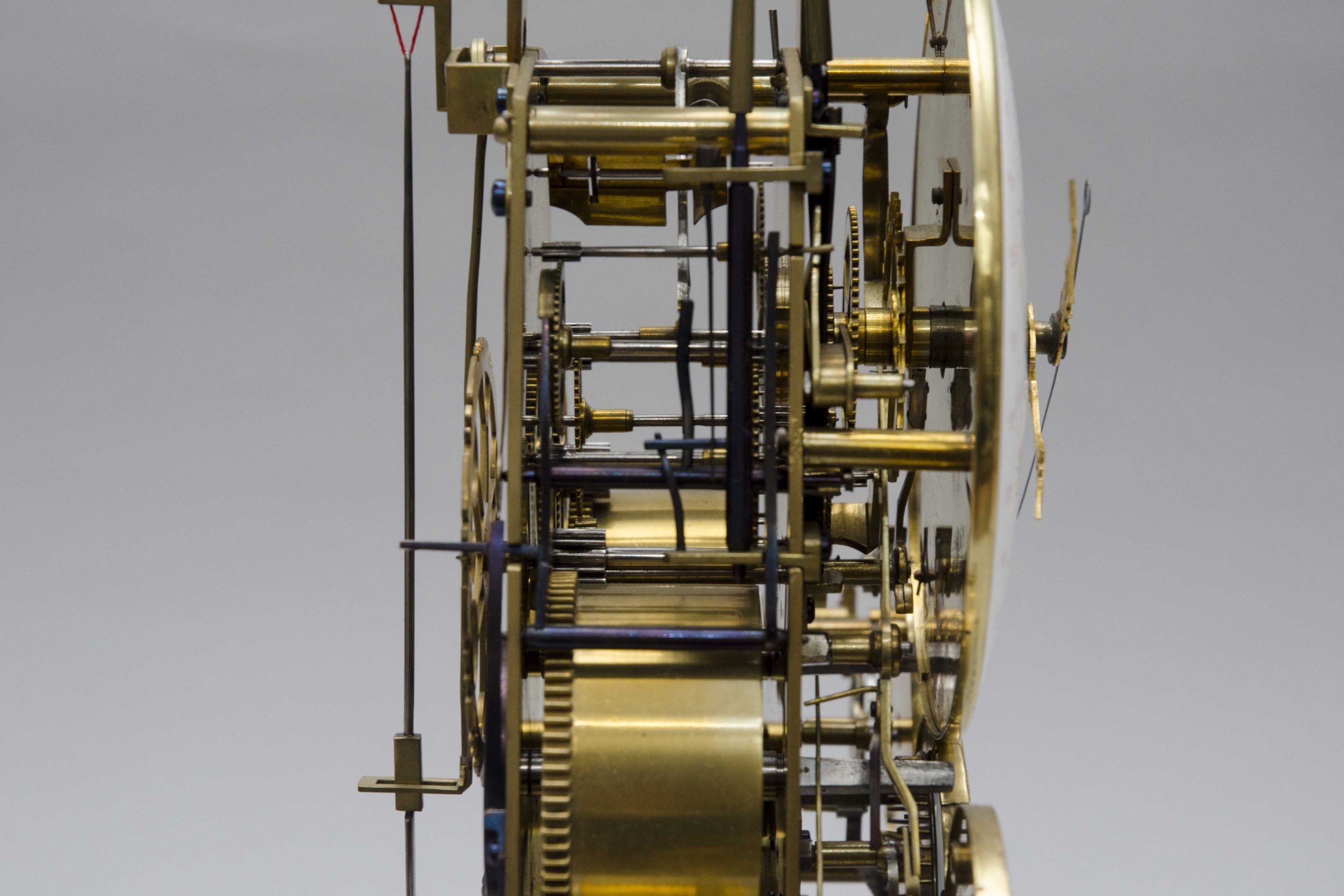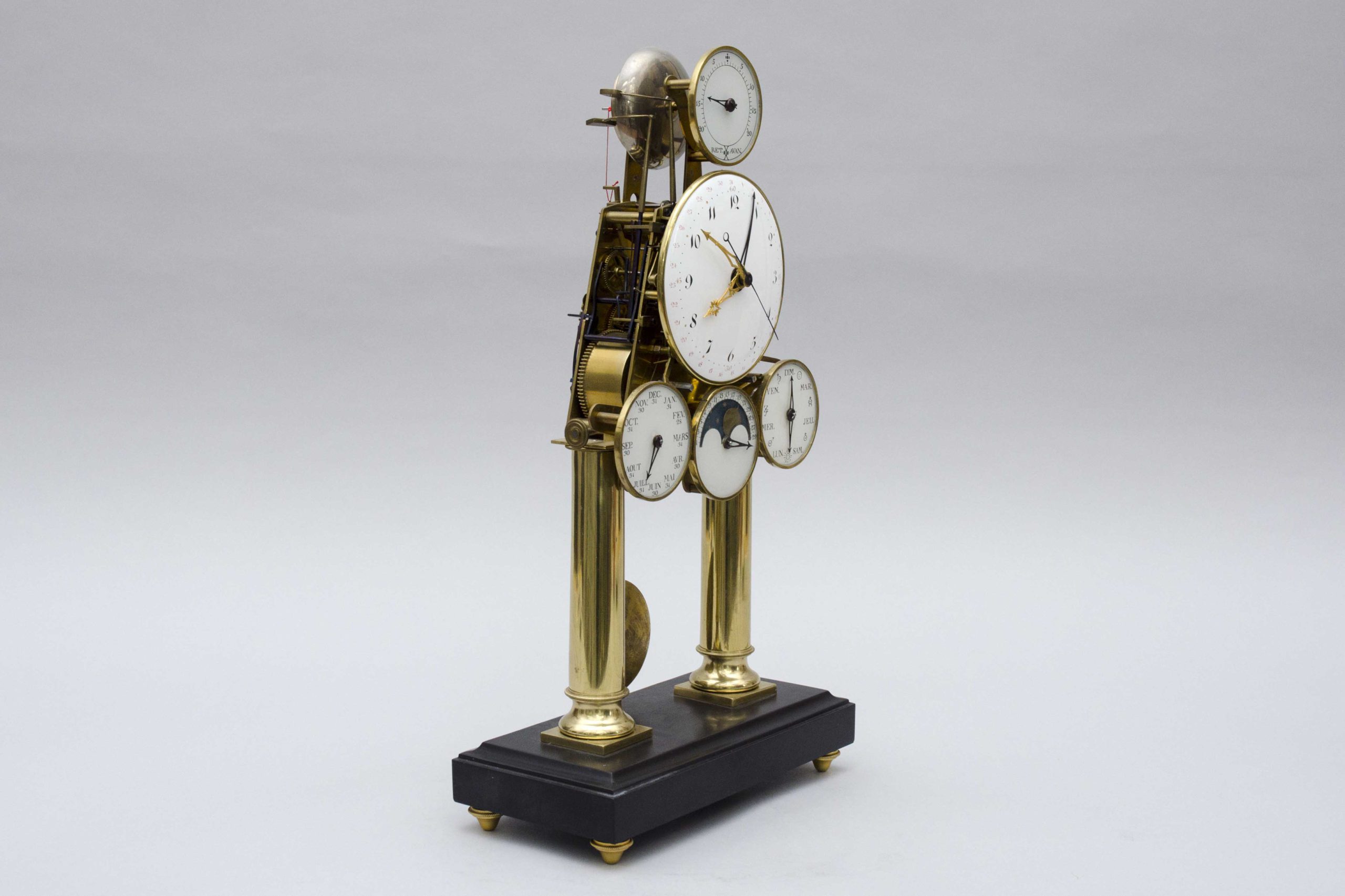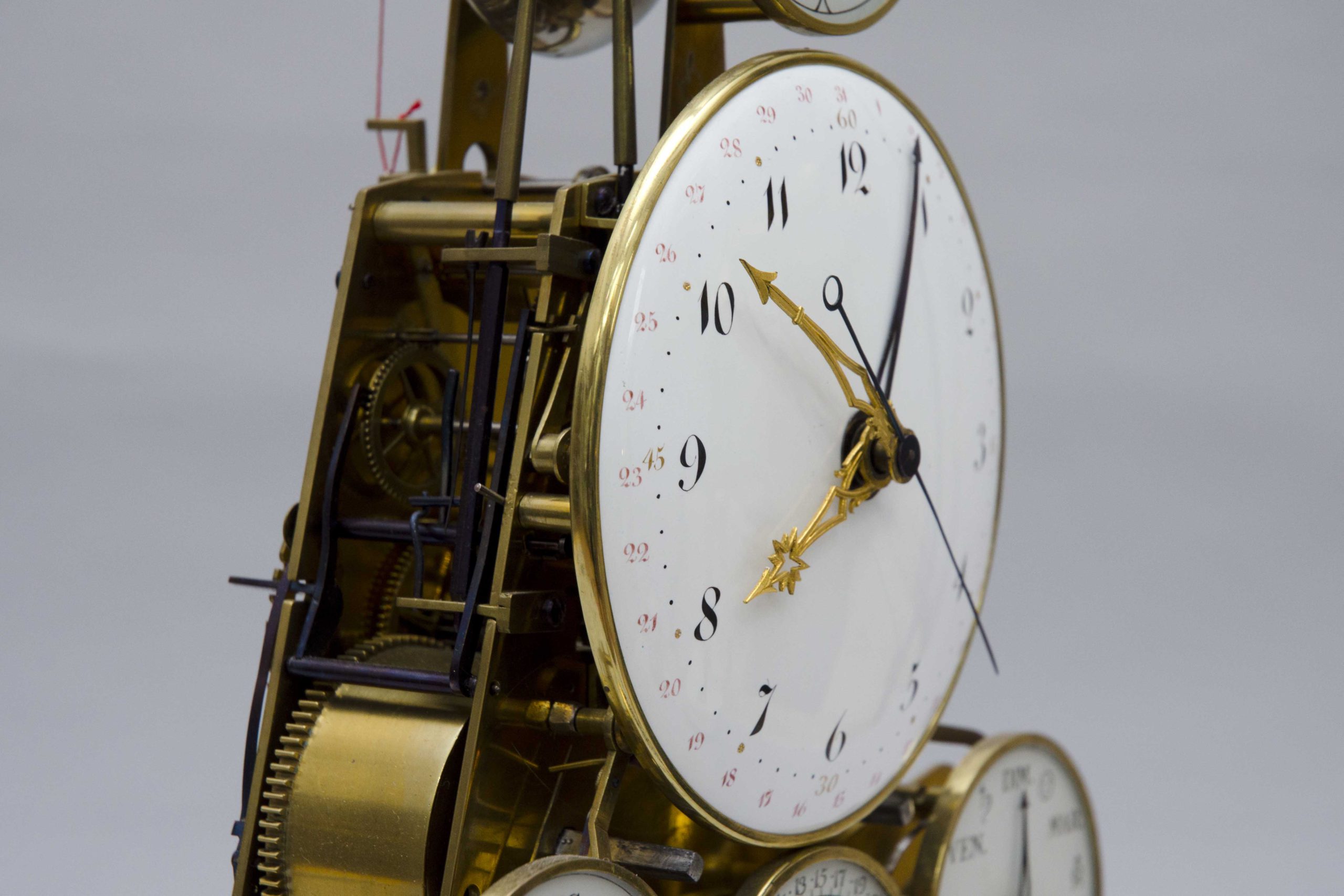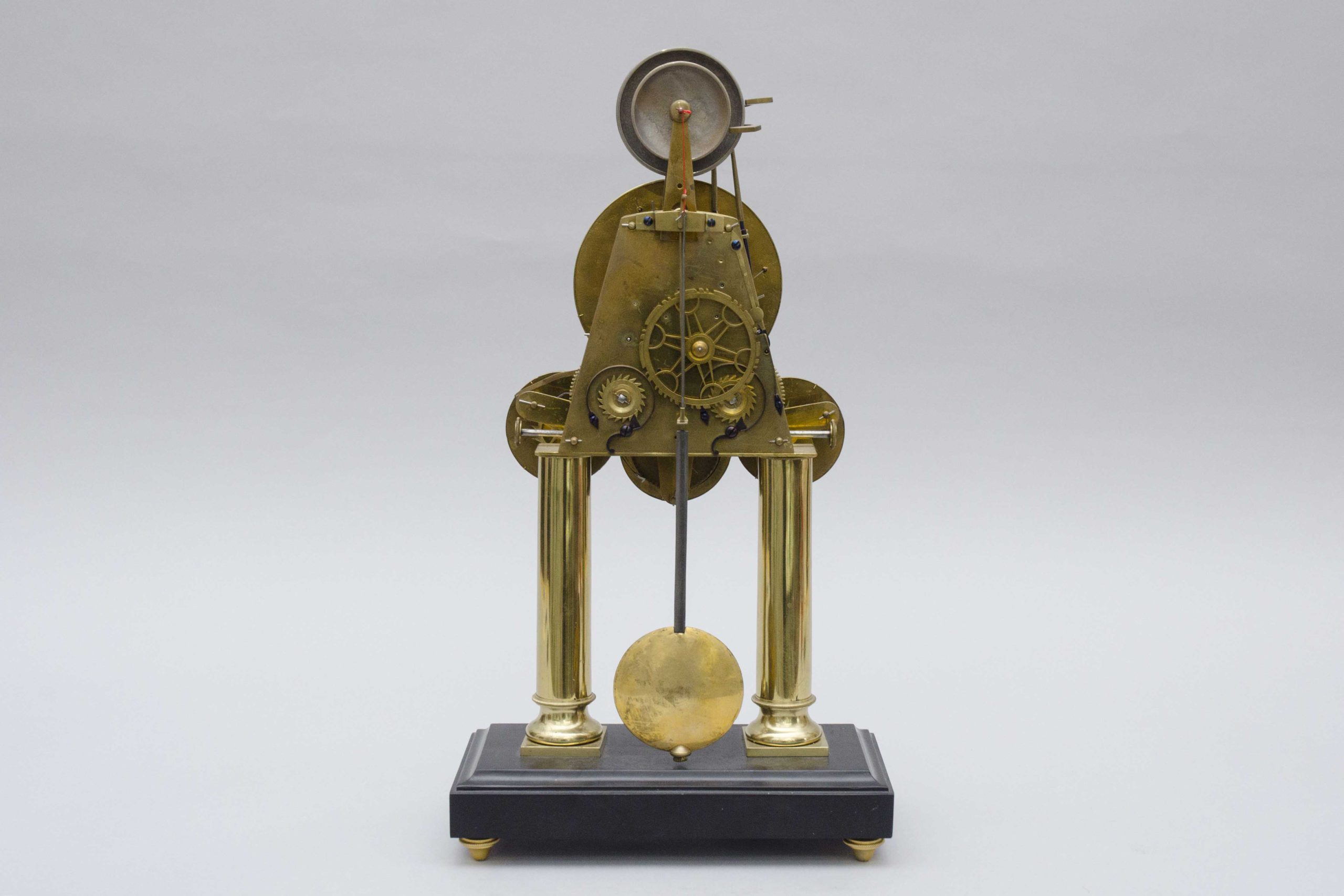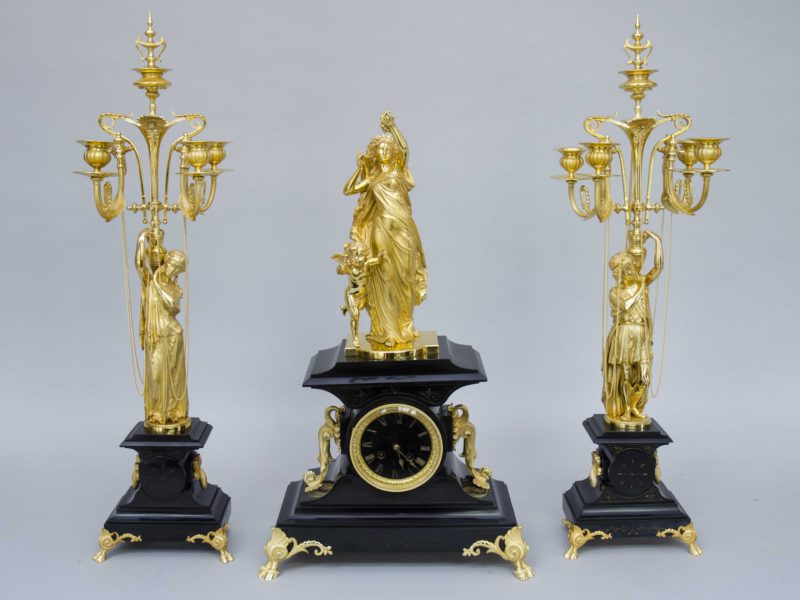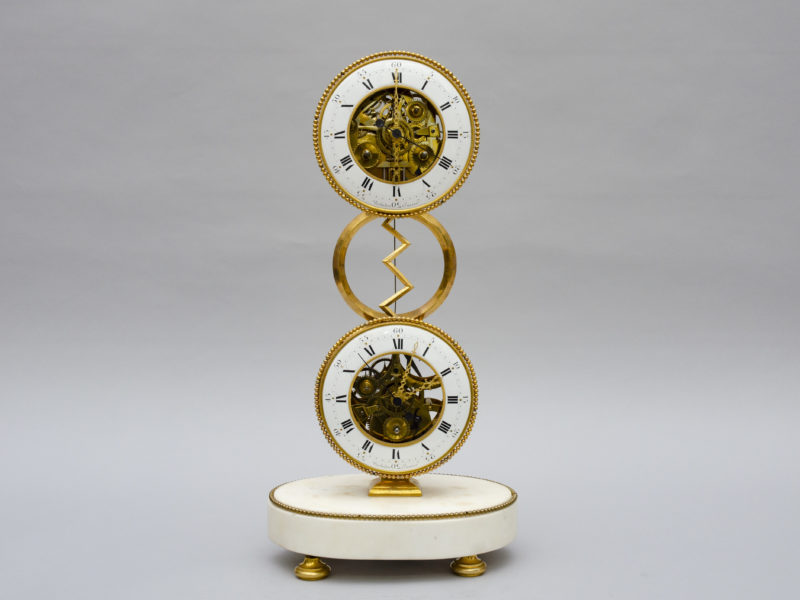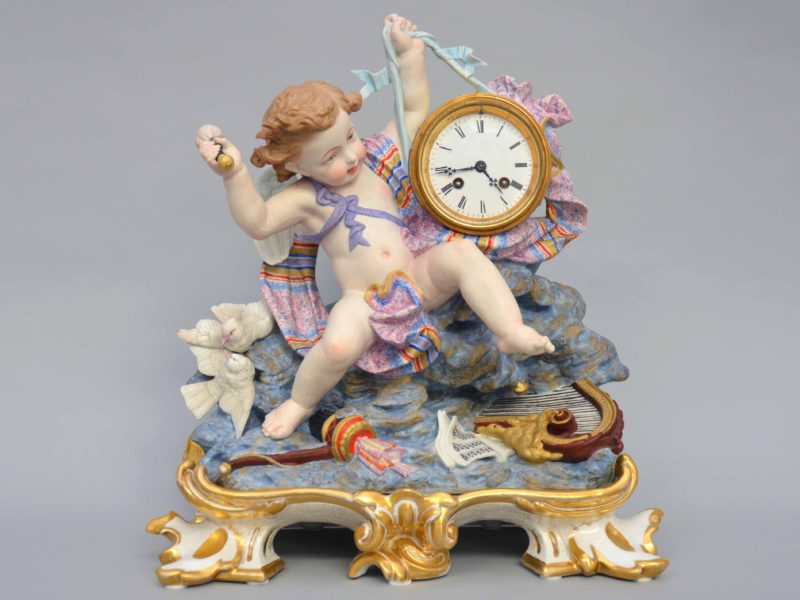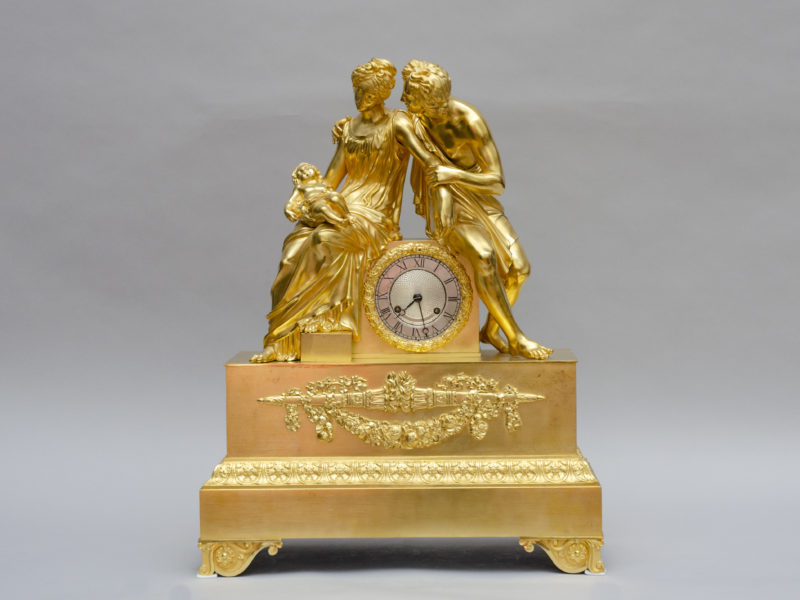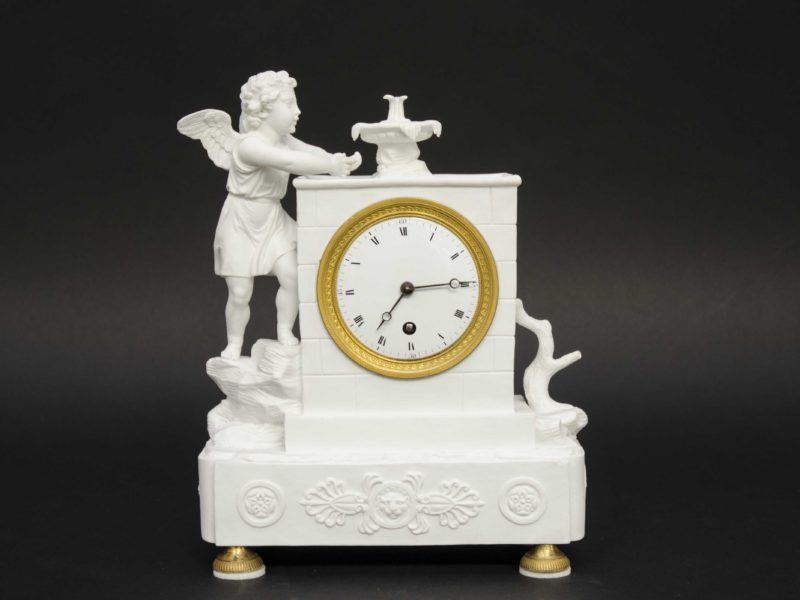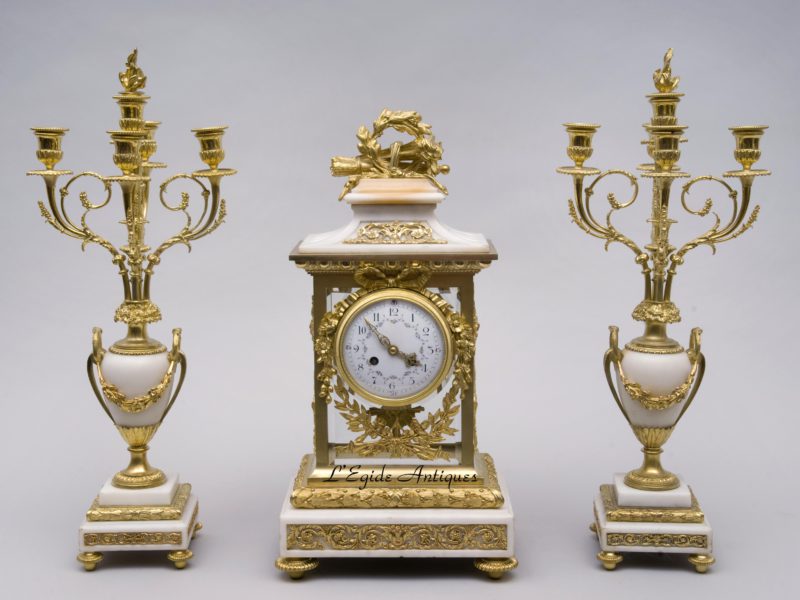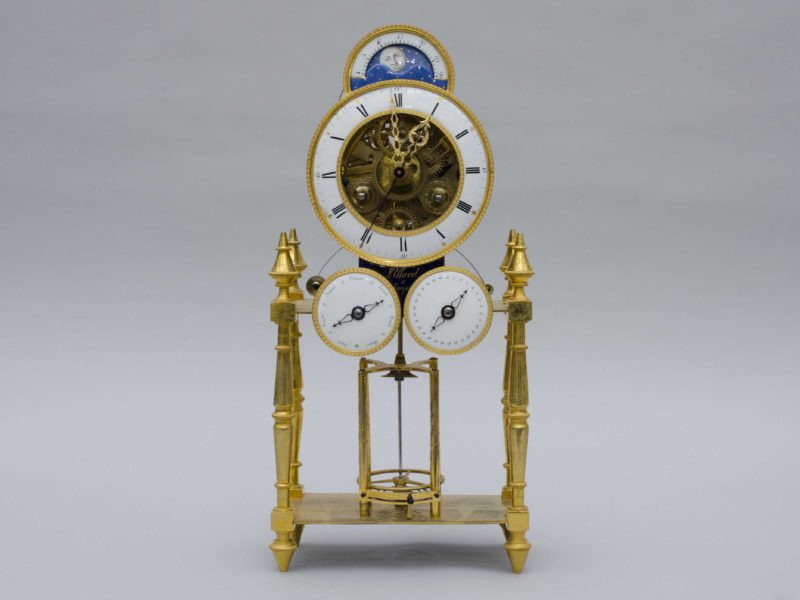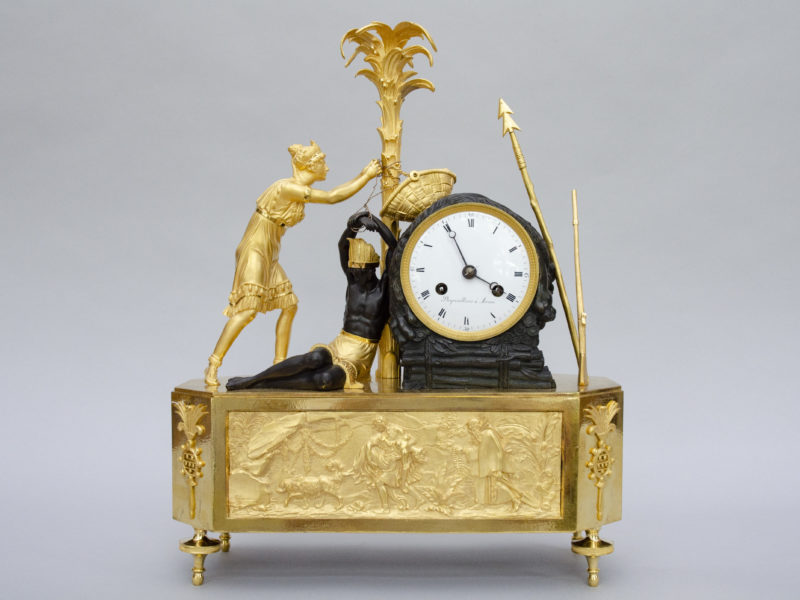Astronomical skeleton clock att. to Sarton Hubert
Price on request
In stock
Contact usSkeleton portico clock in brass, ormolu and black marble of the late 18th century. Apparent movement in chased and gilded bronze; it has no less than five polychrome enamel dials and two different bells that ring beautifully and differently for hours and half hours. The central dial presents black Arabic numerals for the hours, golden for the seconds and red for the days of the month. The dial in the center below shows the phases of the moon, on the left the months of the year and finally on the right the days of the week. The columns which carry the set are in gilded bronzes on a base in black Belgian marble. Pendulum. Excellent condition. Attributed to the clockmaker Hubert Sarton in Liège, late 18th century.
Size: H 42 cm x W 22,5cm
Louis XVI period, circa1790.
Lit: Hubert Sarton (Liège 1748 – 1828), shows a keen interest in mechanics and science from a child, his uncle trained him in watchmaking as soon as 1762. In 1768, Sarton left for Paris to continue his training. He worked there for Pierre Le Roy, son of Julien Le Roy, clockmaker for Louis XVI. He was received master and returned to Liège in 1772 for good. Sarton will provide important persons such as Charles-Alexandre de Lorraine, governor of the Austrian Netherlands and the Prince-Bishop of Liège François-Charles de Velbrück who will be his patron. Hubert Sarton was also an insatiable researcher who developed many inventions, the most famous of which is undoubtedly the automatic rotor watch, for which he deposited a patent at the French Academy of Sciences in 1778. Hubert Sarton decided to withdraw of the trade in 1812, when he experienced bankruptcy following several misfortunes and various political events. In addition to his numerous constructions, he left a whole series of memoires on watchmaking and other subjects.
In stock
Contact us